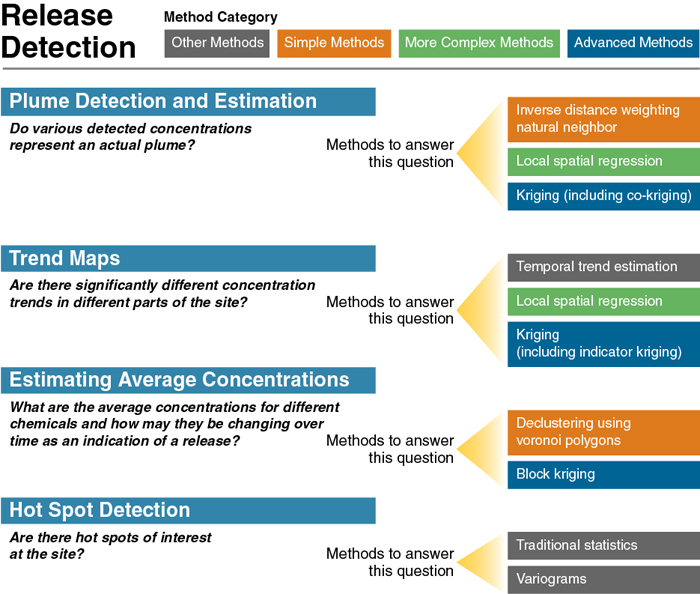Release Detection
Has a release occurred?
During release detection, sampling data are collected near known waste deposits or ecological receptors to determine whether a statistically significant contaminant release into environmental media has occurred. Given that geospatial methods require substantial preexisting data, they are best applied when ongoing monitoring provides the necessary data set (such as detection monitoring at a RCRA waste disposal unit or a landfill). Geospatial methods are also best applied where the contaminants are detected above background levels, such as with some metals, or where the detections of organic contaminants are observed but the concentrations are not over some action level. Information about managing nondetect data is included in the GSMC-1 document.
During release detection, geospatial methods can help to optimize the following:
- identifying additional monitoring locations
- determining background values (see GSMC-1 for more information about background conditions)
- determining the horizontal and vertical extent sufficient to make appropriate initial decision
- assessing the number of monitoring locations and frequency of monitoring
Optimization through geospatial methods is sometimes limited by the lack of data at this stage in the life cycle.
Figure 2 provides an overview of the role of geospatial methods in this stage of the project life cycle. Each general topic and specific question is linked to a more detailed discussion.

Figure 2. Release detection overview.
Release Detection: Plume Detection and Estimation
Do various detected concentrations represent an actual plume?
▼Read more
Release Detection: Trend Maps
Are there significantly different concentration trends in different parts of the site?
Release Detection: Estimating Average Concentrations
What are the average concentrations for different chemicals and how may they be changing over time as an indication of a release?
Release Detection: Hot Spot Detection
Are there hot spots of interest at the site?


